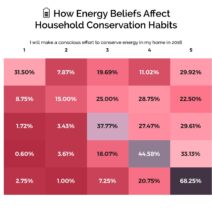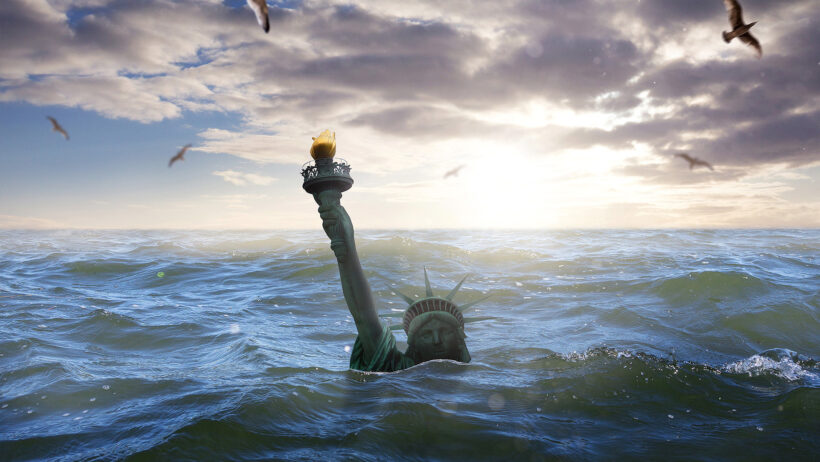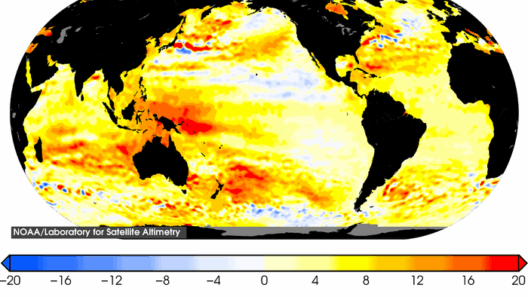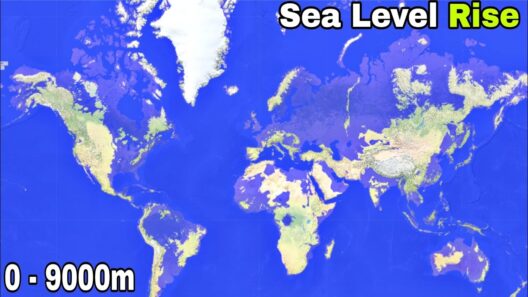The phenomenon of rising sea levels is a pressing global issue that is reshaping coastlines, threatening ecosystems, and altering human communities. This phenomenon isn’t just an environmental concern; it reflects broader challenges associated with climate change, urban planning, and ecological sustainability. As we delve into the intricacies of rising sea levels, it becomes evident that understanding the extent of these changes is paramount to framing policies and responses that can mitigate their impacts.
Historical data demonstrates that sea levels have been steadily increasing over the past century. On a global scale, sea levels rose approximately 8 to 9 inches (about 21 to 24 centimeters) since 1880. However, the rate of rise has accelerated, particularly in the last few decades. Presently, projections indicate that sea levels could rise anywhere from 1 to 4 feet (0.3 to 1.2 meters) by the end of the century, depending on future greenhouse gas emissions. This is an alarming trajectory that beckons a reevaluation of our coastal infrastructures and urban designs.
The current rate of sea-level rise is primarily attributed to two significant factors: thermal expansion of seawater as it warms and the melting of ice sheets and glaciers. As global temperatures continue to rise, ocean water expands. Concurrently, the melting of Greenland and Antarctic ice sheets contributes roughly half of the observed sea-level rise. Even small increases in sea level can lead to dramatic consequences, especially in low-lying coastal areas where populations and ecosystems are particularly vulnerable.
As we look more closely at the regional impacts of rising sea levels, it’s crucial to note that the effects are not uniform across the globe. Some areas experience gradual inundation while others may suffer from increasingly frequent flooding events during high tides and storms. Communities situated in deltas, such as the Mississippi River Delta or the Ganges-Brahmaputra Delta, face immediate threats as land subsidence compounds the effects of rising oceans. This phenomenon not only endangers habitats but also precipitates displacement for millions of people.
The statistics regarding at-risk populations are staggering. The World Bank estimates that up to 143 million people could be displaced by 2050 due to climate-related factors, including rising sea levels. The urgency for effective planning and adaptation strategies cannot be overstated. Coastal cities like Miami, New Orleans, and Jakarta are already investing significantly in infrastructure to counteract these challenges, employing methods ranging from enhanced drainage systems to the construction of sea walls. Yet, the sustainability of these measures remains a question, particularly in light of ongoing climate change.
Furthermore, rising sea levels have profound implications for biodiversity. Coastal ecosystems, such as mangroves and wetlands, are critical for maintaining ecological balance. They function as natural barriers against storm surges and protect species diversity. Yet, as sea levels rise, these habitats are being submerged or eroded, leading to habitat loss for countless species. The interdependence between rising sea levels and ecosystem health amplifies the need for conservation efforts aimed at preserving these vital areas.
The socio-economic ramifications of sustained sea-level rise extend beyond environmental degradation. Individuals in coastal communities rely heavily on tourism, fishing, and other marine-related industries, all of which are susceptible to the repercussions of climate change. Additionally, property values in flood-prone areas are increasingly at risk, leading to economic instabilities that can affect local and national economies alike. The consideration of climate justice also plays a pivotal role here, as marginalized communities are often disproportionately affected by environmental changes despite contributing the least to their causes.
In light of these challenges, innovative solutions and a shift in perspective are imperative. Approaches such as managed retreat—where communities are relocated strategically away from vulnerable coastal areas—are gaining traction, though they are not without controversy. There’s also growing advocacy for the restoration of natural landscapes that can buffer against flooding, such as wetlands and mangroves. Investing in renewable energy and reducing carbon footprints are essential steps to mitigate further climate change and, consequently, the rise in sea levels.
Moreover, fostering public awareness and engagement can galvanize action around this pressing issue. Informing communities about the local impacts of rising sea levels and strategies for resilience can empower individuals to take collective action. This civic involvement can lead to more robust political will and policy changes essential at local, national, and international levels.
Understanding how much sea levels are rising is not simply a matter of scientific inquiry; it is a call to action for humanity. With the consequences of inaction laid bare before us, and the threat looming larger on the horizon, the time to innovate, educate, and adapt has never been more urgent. The challenge ahead calls for creative problem-solving, collaboration across sectors, and a commitment to realizing a sustainable future in the face of adversity.








